




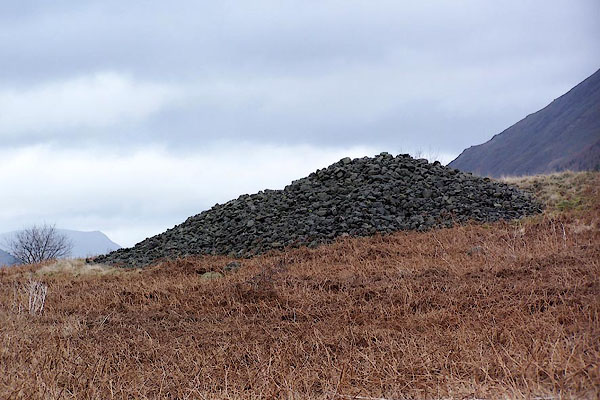
BLP96.jpg Pretty unexciting, and probably piled up anew by navvies.
(taken 15.2.2006)
placename:- Dunmail Raise
placename:- Dunbalrase Stones
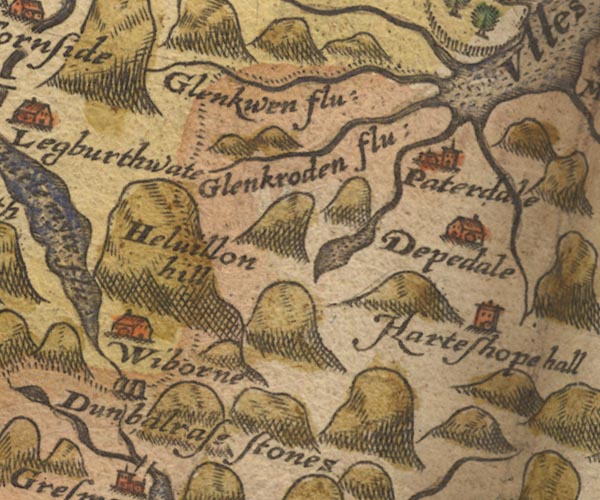
SAX9NY31.jpg
"Dunbalrase stones"
2 stones on the county boundary.
item:- private collection : 2
Image © see bottom of page
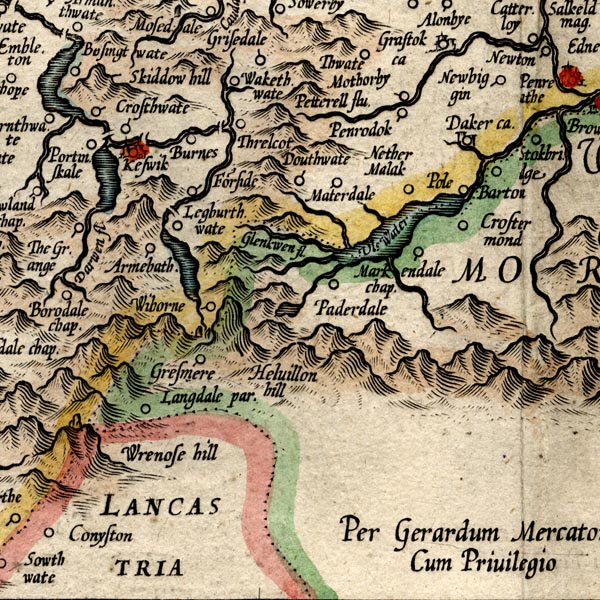
MER8CumF.jpg
""
stones at county boundary with Westmorland
item:- JandMN : 169
Image © see bottom of page
placename:- Dunbalrase Stones
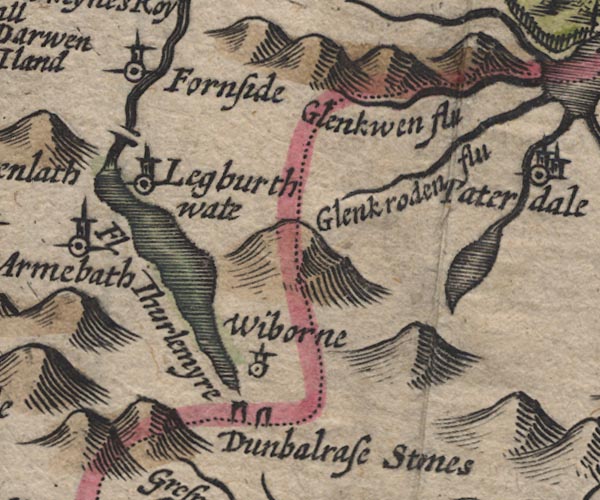
SP11NY31.jpg
"Dunbalrase Stones"
two standing stones on the county boundary
item:- private collection : 16
Image © see bottom of page
placename:- Dunbalrase Stones
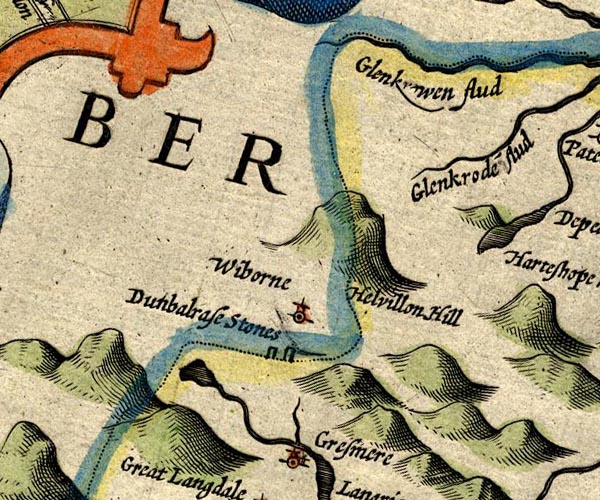
SP14NY31.jpg
"Dunbalrase Stones"
two standing stones; on county boundary
item:- Armitt Library : 2008.14.5
Image © see bottom of page
placename:- Dunbalrase Stones
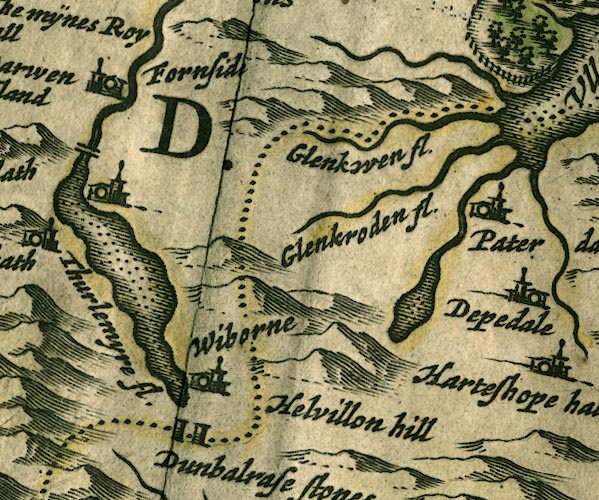
JAN3NY31.jpg
"Dunbalrase stones"
Marked by two very square pillars; at county boundary.
item:- JandMN : 88
Image © see bottom of page
placename:- Dunmaile Raise Stones
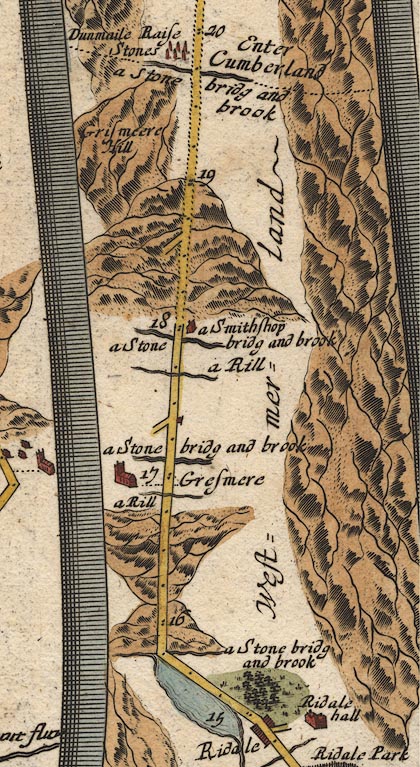
OG96m015.jpg
In mile 19, Cumberland. "Dunmaile Raise Stones"
six standing stones on the left of the road.
item:- JandMN : 22
Image © see bottom of page
placename:- Dunbalrase Stones
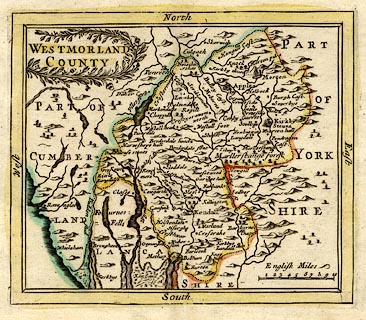 click to enlarge
click to enlargeSEL7.jpg
"Dunbalrase stones"
two standing stones; on county boundary
item:- Dove Cottage : 2007.38.87
Image © see bottom of page
placename:- Dunmail Raise Stones
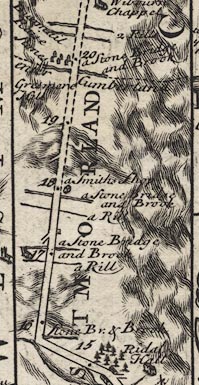
B260m15.jpg
Between mile 19 and 20, enter Cumberland, Dunmail Raise Stones drawn by 6 upstanding stones on left, west, of road. "Dunmail Raise Stones Are supposed to have been erected by Dunmail K. of Cumberland for ye bounds of his Kingdom. (at 20)"
item:- private collection : 1.260
Image © see bottom of page
placename:- Dunmaile Raise Stones
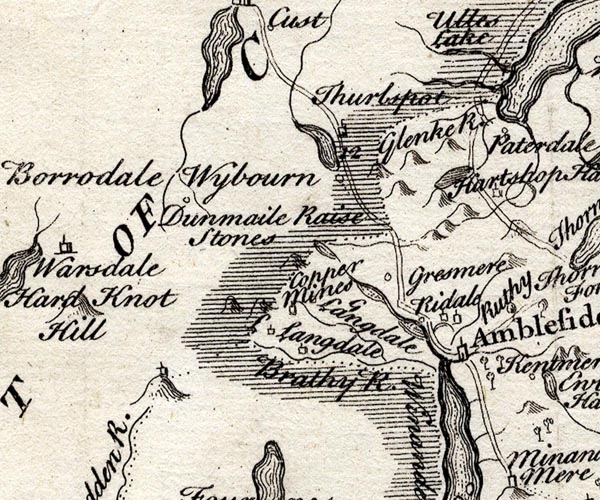
SMP2NYF.jpg
"Dunmaile Raise Stones"
item:- Dove Cottage : 2007.38.59
Image © see bottom of page
placename:- Dunmail Raise Stones
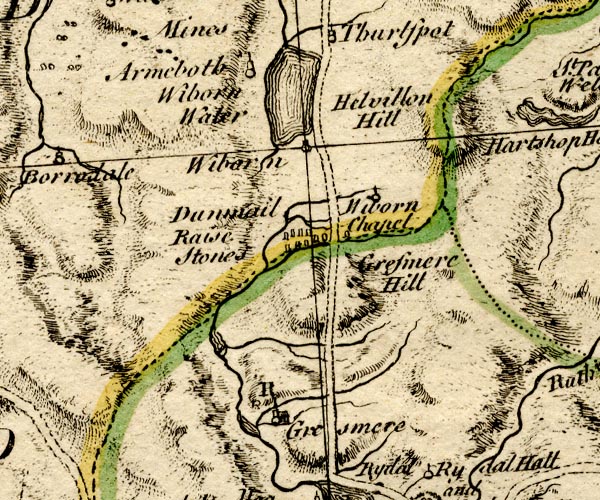
BO18NY20.jpg
"Dunmail Raise Stones"
array of standing stones, mostly W of road
item:- Armitt Library : 2008.14.10
Image © see bottom of page
placename:- Dummel Wrays Stones
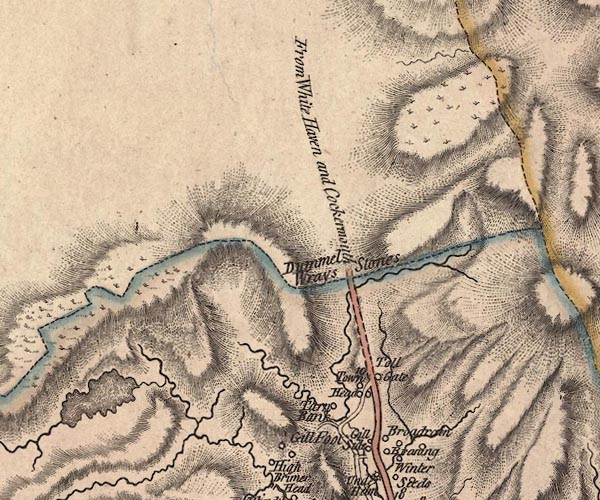
J5NY31SW.jpg
"Dummel Wrays Stones"
no symbol, on county boundary
item:- National Library of Scotland : EME.s.47
Image © National Library of Scotland
placename:- Dunmelraise Stones
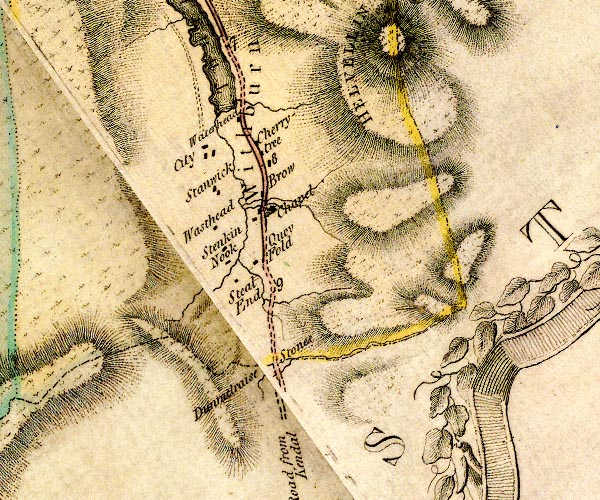
D4NY31SW.jpg
"Dunmelraise Stones"
on county boundary
item:- Carlisle Library : Map 2
Image © Carlisle Library
placename:- Dunmail Raise Stones
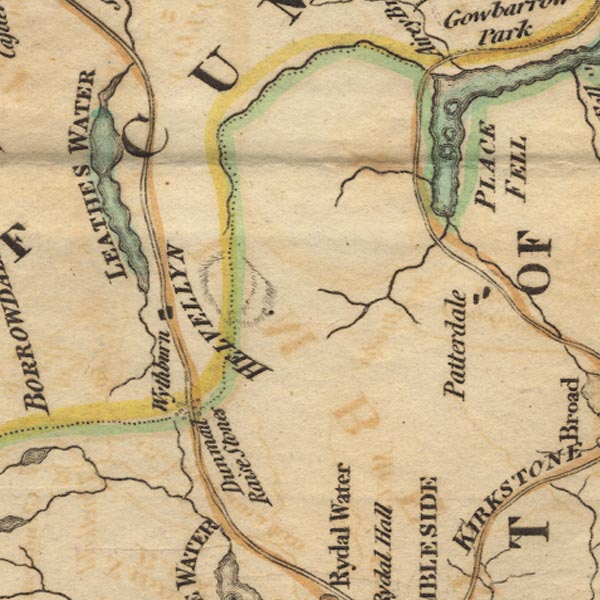
Ws02NY31.jpg
A number of stones drawn either side of the road.
item:- Armitt Library : A1221.1
Image © see bottom of page
item:- battle
 goto source
goto sourcePage 118:- "..."
"... Rays-Gap, or Dunmail-Rays, ... Some will tell you that it had its name from Dunmail King of Cumberland, who in conjunction with Llewellyn King of South Wales, fought a battle with Edmund our Saxon King, and Malcolm King of Scots at this place; and that Edmund gained a com-"
 goto source
goto sourcePage 119:- "[com]pleat victory, slaying Dunmail, taking his two sons prisoners, and putting out there eyes; which also put an end to the Cumberland monarchs: That Dunmail was buried here underneath a very large kairn, (seen at this day close to the road,) whose magnitude and remains argues sufficiently that it was the tomb of a respected hero."
"This is not a very improbable story, for this Dunmail assisted the Northumbrians against Edmund; and Edmund, though victorious, was so weakened, that he durst not pursue Dunmail, (who had gotten Llewellyn to join him,) without the assistance of the Scots. Malcolm King of Scots joined Edmund, upon this condition, that if they were successful, Malcolm should have Cumberland upon paying homage. Dunmail being obliged to fly for a while from his powerful enemies, was here determined to hazard a battle, both as having the advantage of the higher ground, and also being driven to the extremity of his kingdom, this being the place where Cumberland is yet divided from Westmorland, which battle proved fatal to him."
"Matt. of Westminster says, Leolin, or Llewellyn, joined Edmund. Sim. of Durham says Llewellyn assisted Dunmail: of these two ancient and great historians I rather am inclined to believe the latter; for how could a petty king of Cumberland pretend to withstand the united forces of Edmund, Malcolm, and Llewellyn, after being defeated too? That Malcolm joined Edmund is very certain, for he had the country assigned to him upon condition of doing homage, and that he and his successors should assist Edmund and his successors both by sea and land, and own him as Lord Paramount."
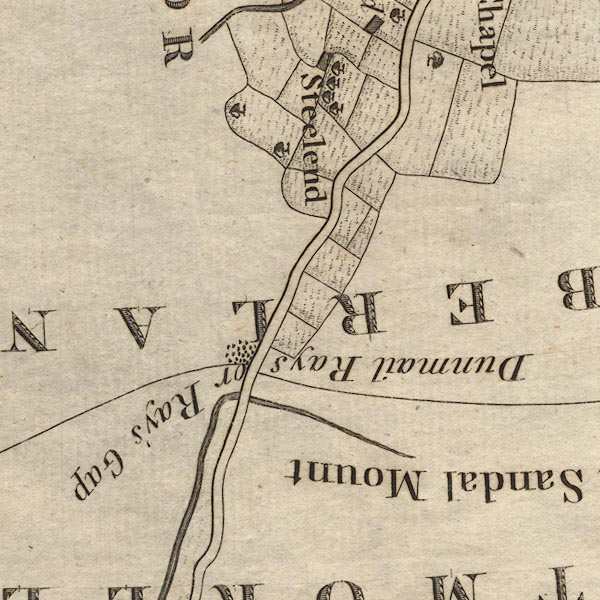
CL9NY31A.jpg
Marked by a group of stones.
item:- private collection : 10.9
Image © see bottom of page
placename:- Dunmail Wray's Stones
 goto source
goto sourcePage 155:- "..."
"On a high pass between the hills near Rydal is a large Carnedd called Dunmail Wray's stones, collected in memory of a defeat given 946 to a petty king of Cumberland by Edmund I. who gave his territory to Malcolm king of Scotland, on consideration he preserved the peace of the North of England. The map makes it nine single stones."
"Dunmail Raise is a large mountain, great part whereof is in Gresmere parish, and is so called from a heap or raise of stones by the road side, which divides Cumberland from this county, thrown together either by Dunmail king of Cumberland as a mark of the utmost border of his kingdom, or by some other in memory of him."
placename:- Dunmel Wrays Stones
 goto source
goto source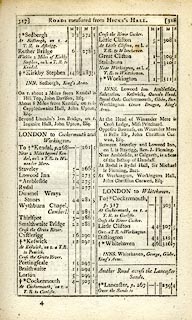 click to enlarge
click to enlargeC38317.jpg
page 317-318 "Dunmel Wrays Stones"
item:- JandMN : 228.1
Image © see bottom of page
placename:- Dunmel Raise Stones
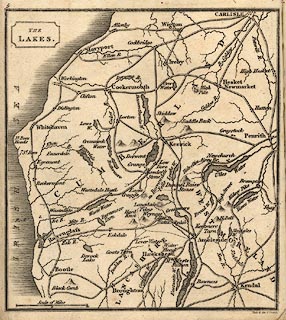 click to enlarge
click to enlargeGRA1Lk.jpg
"Dunmel Raise Stones"
by county boundary
item:- Hampshire Museums : FA2000.62.5
Image © see bottom of page
item:- boundary mark
 goto source
goto sourceGentleman's Magazine 1805 p.1011 "..."
"We now ascended Dunmail Raise, so named from Dunmail, the last King of Cumberland, who was defeated and buried here by Edward the Saxon. The place of his interment, marked by a rude heap of stones, is still retained as the line of demarkation between the counties. ..."
placename:- Dunmail Raise Stones
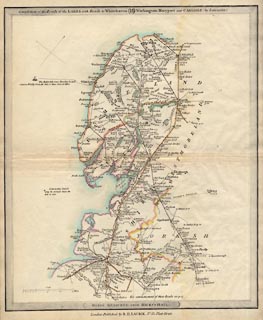 click to enlarge
click to enlargeLw18.jpg
"Dunmail Raise Stones 284¼"
stones; distance from London; on county boundary
item:- private collection : 18.18
Image © see bottom of page
item:- cart
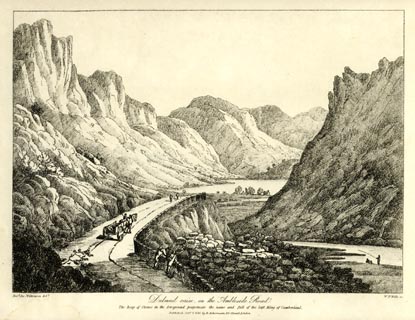 click to enlarge
click to enlargeWKN116.jpg
Plate 16 in Select Views in Cumberland, Westmoreland, and Lancashire.
printed at bottom left, right, centre:- "Revd. Jos: Wilkenson delt. / W: F: Wells sc. / Dulmail Raise, on the Ambleside Road. / The heap of stones in the foreground perpetuate the name and fall of the last King of Cumberland / Published Octr. 1. 1810. by R. Ackermann. 101. Strand. London."
item:- Fell and Rock Climbing Club : MN4.16
Image © see bottom of page
placename:- Dunmelwrays
 goto source
goto sourceGentleman's Magazine 1825 part 1 p.414
From the Compendium of County History:- "946. Edmund wasted Cumbria, and having put out the eyes of the two sons of Dunmail, gave that province to Malcolm, King of Scotland. Dun-mel-wrays is supposed to have been erected in memory of it, or as a boundary of Dunmail's kingdoms."
 goto source
goto sourcePage 45:- "DUNMAIL RAISE"
"Is a cairn or burrow of stones, marking the place where the last king of Cumbria was defeated by the Saxon Edmund, who put out the eyes of the son before the father's face, wasted his kingdom, and then gave it to Malcolm, king of Scotland, to hold in fealty. The wall dividing the counties is built over it, and the road is partly cut through it. ..."
 goto source
goto sourcePage 164:- "..."
"DUNMAIL RAISE is a large cairn, now marking the boundary line between Westmorland and Cumberland: tradition ascribes it to the memory of a British king of that name, who was here defeated and slain in battle by Edmund I. of England. ..."
placename:- Dunmail Raise Stones
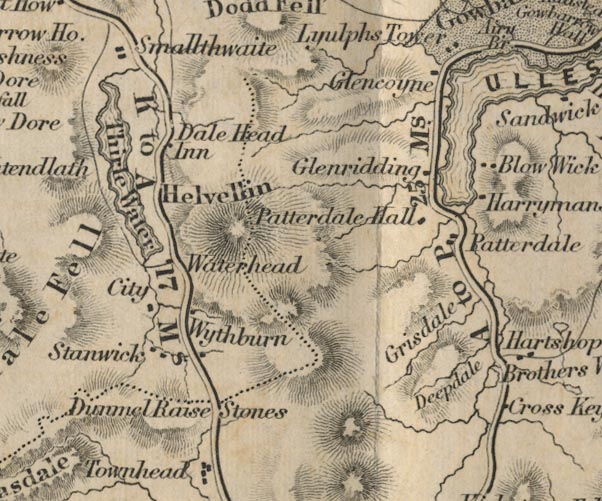
FD02NY31.jpg
"Dunmail Raise Stones"
No symbol, at county border.
item:- JandMN : 100.1
Image © see bottom of page
 goto source
goto sourcePage 68:- "... Dunmail Raise ... The cairn,- a rude mass of stones near the top of the ascent, which the stranger should be on the look out for, marks the spot of a critical conflict in the olden time,- that is, in A.D. 945,- when the Anglo Saxon King Edmund defeated and slew Dunmail, the British King of Cumbria, and then put out the eyes of the two sons of his slain foe, and gave their inheritance to Malcolm, King of Scotland."
 goto source
goto sourcePage 83:- "... this road ascends Dunmail-raise, where lie the historical stones, that perpetuate the name and fall of the last king of Cumberland, defeated there by the Saxon monarch Edmund, who put out the eyes of the two sons of his adversary, and for his confederating with Leolin, king of Wales, first wasted his kingdom, and then gave it to Malcolm, king of Scots, who held it in fee of Edmund, A.D. 944, or 945. The stones are a heap, that have the appearance of a karn, or barrow. The wall that divides the counties is built over them; which proves their priority of time in that form."
